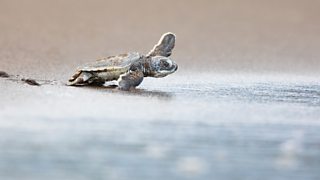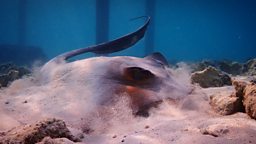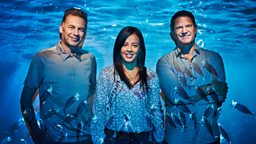Meet the stars
Find out more about the stars of Blue Planet Live...
Scroll down to learn more information about some of the species we are observing and featuring when we go live.
The locations we have selected to visit on Blue Planet Live are hotspots for marine biodiversity, which means they will show the greatest changing impacts due to human influences.
Within each of these locations we have several amazing species which are ‘indicator species’, this means a species which shows the effects of change first, by studying these we can predict what changes are coming which could affect the rest of the creatures in their ecosystems, from plastic pollution to climate change.
Organisms that can tell us about changes in an environment due to their presence, absence or abundanceIndicator species - a definition
In the Bahamas Steve Backshall is looking for:
Caribbean reef sharks
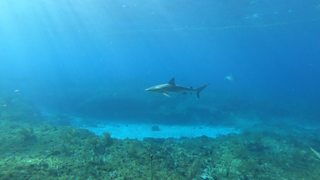
Reef sharks are one of the more common species of shark found in the waters of the Bahamas.
These are top predators on the reef, but pose no danger to humans unless provoked. They can form hunting packs that cause fish to dart for cover in the safety of the coral.
Steve is exploring the threats that they currently face, including overfishing and persecution.
Great hammerhead sharks
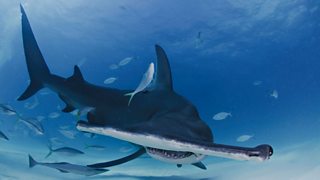
Great hammerheads are the largest of the sharks in the Bahamas, reaching over 6m in length!
Steve is following these huge predators as they travel up the East coast of the Americas, migrating to follow food or to breed. The unique shape of their head gives them a huge surface area to detect electrical impulses given out by their favourite prey, hiding beneath the sand - stingrays.
Hammerheads are in particular danger from humans due to their large size. Their huge fins make them a target for shark fin soup, as well as making them vulnerable to becoming entangled in fishing nets.
Tiger sharks
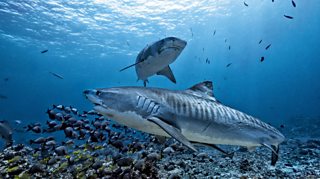
Tiger sharks are one of the largest apex predators reaching over 4 metres in length. Just like their namesake, they sit right at the top of the food chain.
But they are actually called tiger sharks due to the stripy pattern that juveniles have, which fade later in life. Tiger sharks are amazing powerful animals and will take large prey, with jaws strong enough to crack turtle shells,. But Steve is finding out just how calm they really can be.
Silky sharks
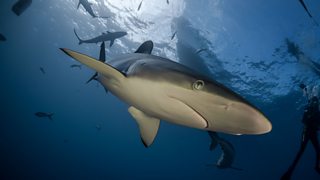
This species can grow up to over 3 metres in length and prefer open water to shoreline, hunting there for schools of large fish such as tuna in high speed chases. This often brings them into contact with fishing nets, which they don’t see until it’s too late.
Silky sharks are named due to their “smooth” skin, which has a shiny glean compared to other sharks. They have very well developed hearing which they may use for detecting prey.
Silky sharks are listed as Vulnerable on the IUCN red list due to targeted fisheries in many places across the world.
Blacktip sharks
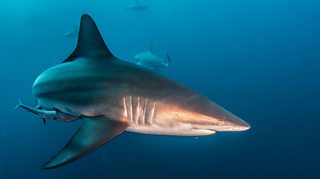
Blacktip sharks are shallow water specialists, often hugging coastlines across all the tropical seas of the world.
They can grow up to well over 2 metres long, and spend their time in single sex schools, except in the mating season. Usually, they eat fish but also supplement their diet with crustaceans, squid and stingrays.
Blacktips have to face many human threats due to their coastal habitats, which makes them vulnerable to coastal developments disrupting breeding sites and commercial fishing. Their close proximity to humans also makes them easy targets for the trade in shark fin soup. They also have to watch out for other shark species as they exist alongside great hammerhead sharks!
Southern stingrays

Stingrays have a bad reputation due to the infamous serrated barb in their tail, but in reality this is generally only used in defence.
Stingrays use their tail in much the same way as scorpions, lifting it up and over the body to sting an attacker in front of them.
Not a lot is known about southern stingrays, they are data deficient on the IUCN red list, making them one of the more mysterious species on Blue Planet Live. Alongside sharks, they are often considered the villains of the ocean but here we’ll be looking at their softer side as parents.
On Heron Island Liz Bonnin is looking for:
Noddy terns
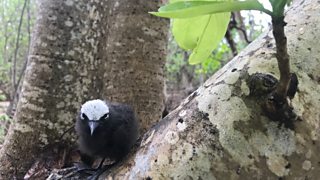
Heron Island fills with tens of thousands of noddy terns for the breeding season (September -April) where they nest in high density.
Here they will lay one egg and raise their chicks until they fledge on a diet of small fish, squid and crustaceans. Unusual for seabirds, they will raise more than one chick in a season if given the opportunity, sometimes even having 3 chicks one after the other!
The high numbers of these seabirds on small islands is an important part of the ecosystem here as the guano feeds nutrients into the environment around it. Nearby coral reefs were found to have higher levels of nitrogen which supports life on coral reefs.
Wedge-tailed shearwaters
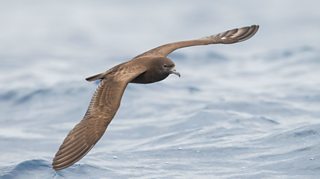
Wedge-tailed shearwaters nest on Heron island in staggering numbers - 13,000 pairs a year breed here!
They are seabirds, a group which have deteriorated more than any other bird group in the last 20 years, and Liz is looking into the reasons behind these declines.
One big reason is plastic - parents will pick it up, thinking it is food, and feed it to their chicks which can’t digest or pass it out. In few other animals can we so clearly see the effects that the plastic making its way into our oceans is having.
Coral
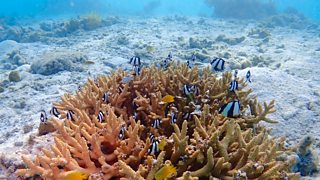
Coral is an amazing animal (yes, animal!) in that it builds the vast structures that hundreds, even thousands of other species depend on the world over.
In fact, 25% of all marine fish species make their home in and around coral. These tiny lifeforms are the architects of the largest single structure created by living organisms on earth - the Great Barrier Reef. They’re not only responsible for the diversity of species found there, but also for the millions of people whose livelihoods depend on them off of the coast of Australia and across the world.
Liz explores the current crisis that reefs are facing - bleaching events, as the seas warm up and the coral polyps die off.
Green turtles
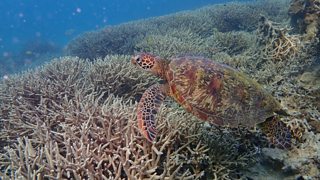
Turtles have been swimming in the ocean since the time of the dinosaurs, and are a consistent favourite the world over.
The green turtle is perhaps the poster turtle, the one everyone knows. Liz will be based at one of the biggest green turtle nesting sites in the world, trying to capture the moment that the tiny turtles first emerge from beneath the sand and face the gauntlet of predators on their way to the sea. The challenge is far from over when they reach the ocean, with only 0.1% of all hatchlings reaching adulthood.
But with a whole new host of challenges, how well will these turtles survive in an ocean plagued by plastic and rising temperatures?
In Baja, Mexico Chris Packham is looking for:
Blue whales

Blue whales are the largest animals to have ever lived on the planet, bigger than any of the dinosaurs, including infamous marine predators like mosasaurus or megalodon. And we share our planet with it today!
Their size made them a prime target for the whaling industry over the last century, which sent them into serious decline. Luckily this no longer poses so much of a threat and their numbers are bouncing back.
But they’re not in the clear yet - Chris is looking at new threats in the oceans, like noise pollution and ocean temperature changes.
Gray whales
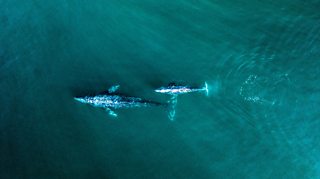
Gray whales have the longest migration of any mammal, between 12,000 and 20,000km to reach their birthing grounds!
The waters of three isolated lagoons of Baja are home to the largest whale nurseries that we know of. Here grey whale mothers raise their young in the relative safety of the sheltered lagoons, before they brave a predator-filled journey to homes as far north as Alaska.
Gray whales are often the targets of killer whales during their migrations with their calves, but here in relative safety their young get the easiest possible start in life.
We're watching these bus-sized giants from the air to follow the intimate moments between mothers and their young calves.
Humpback whales
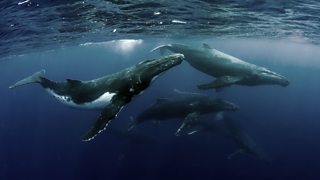
Humpback whales are perhaps the most iconic whale species on the planet, their distinctive outlines are immediately recognised by people all over the world.
They’re also arguably one of nature’s greatest singers. We explore how their world revolves around sound, and how noise pollution could be the next big threat to humpbacks and other whales.
Chris is asking scientists to find out what can be done about this, in an ocean filled with more and more international shipping?
-
![]()
Give the Big Blue Planet Live Quiz a go
Now you've found out all about the animals it's time to put that knowledge to the test.
